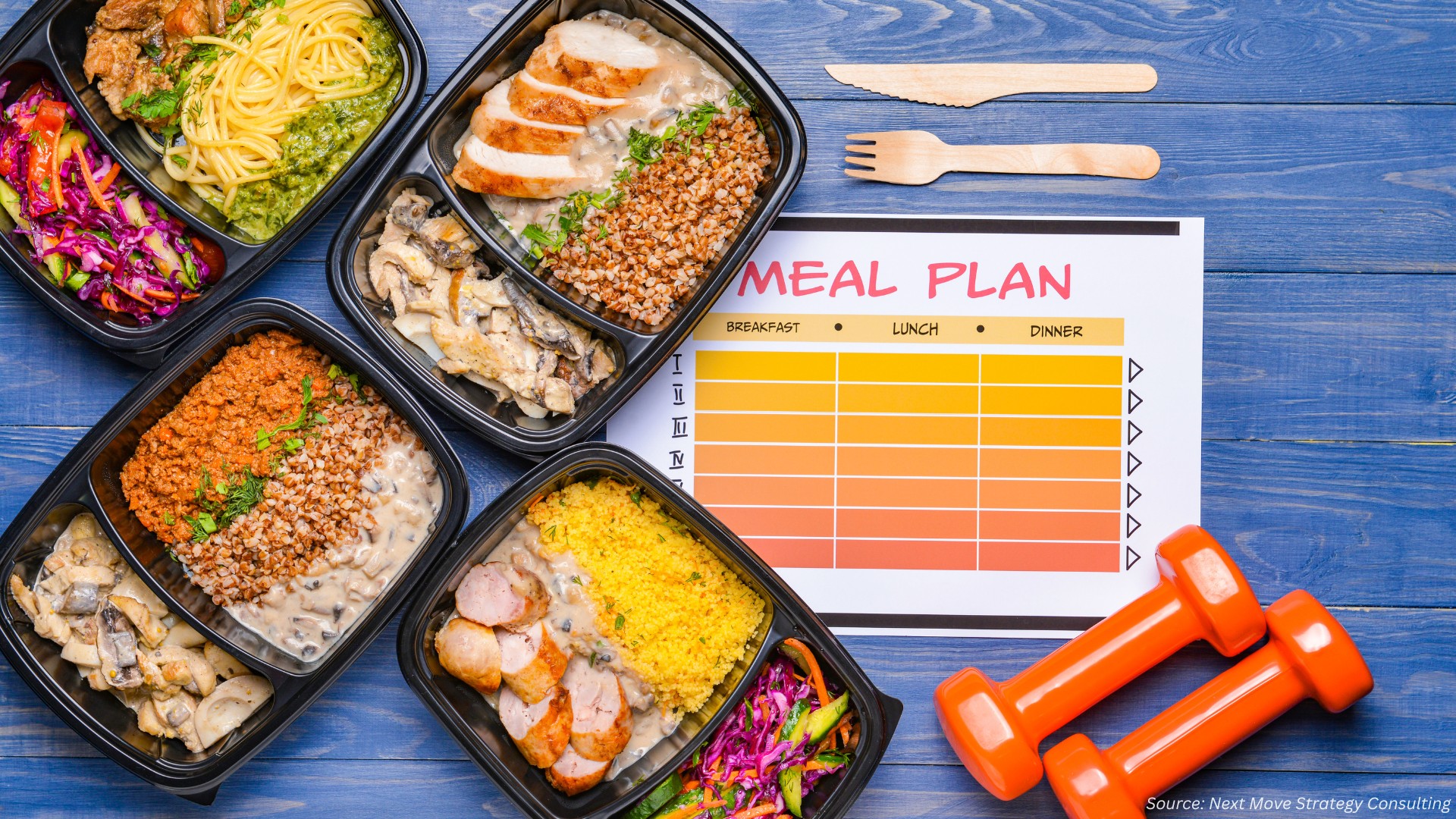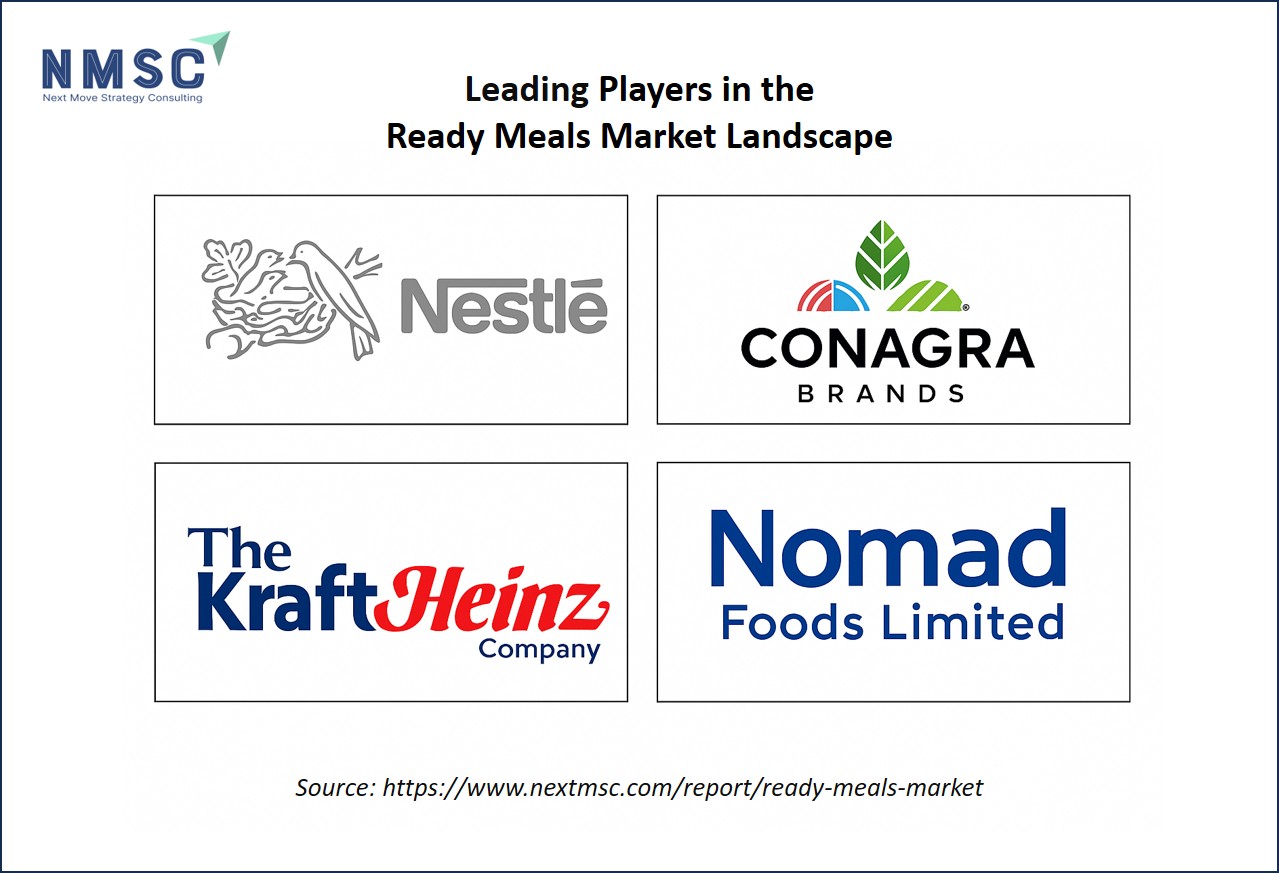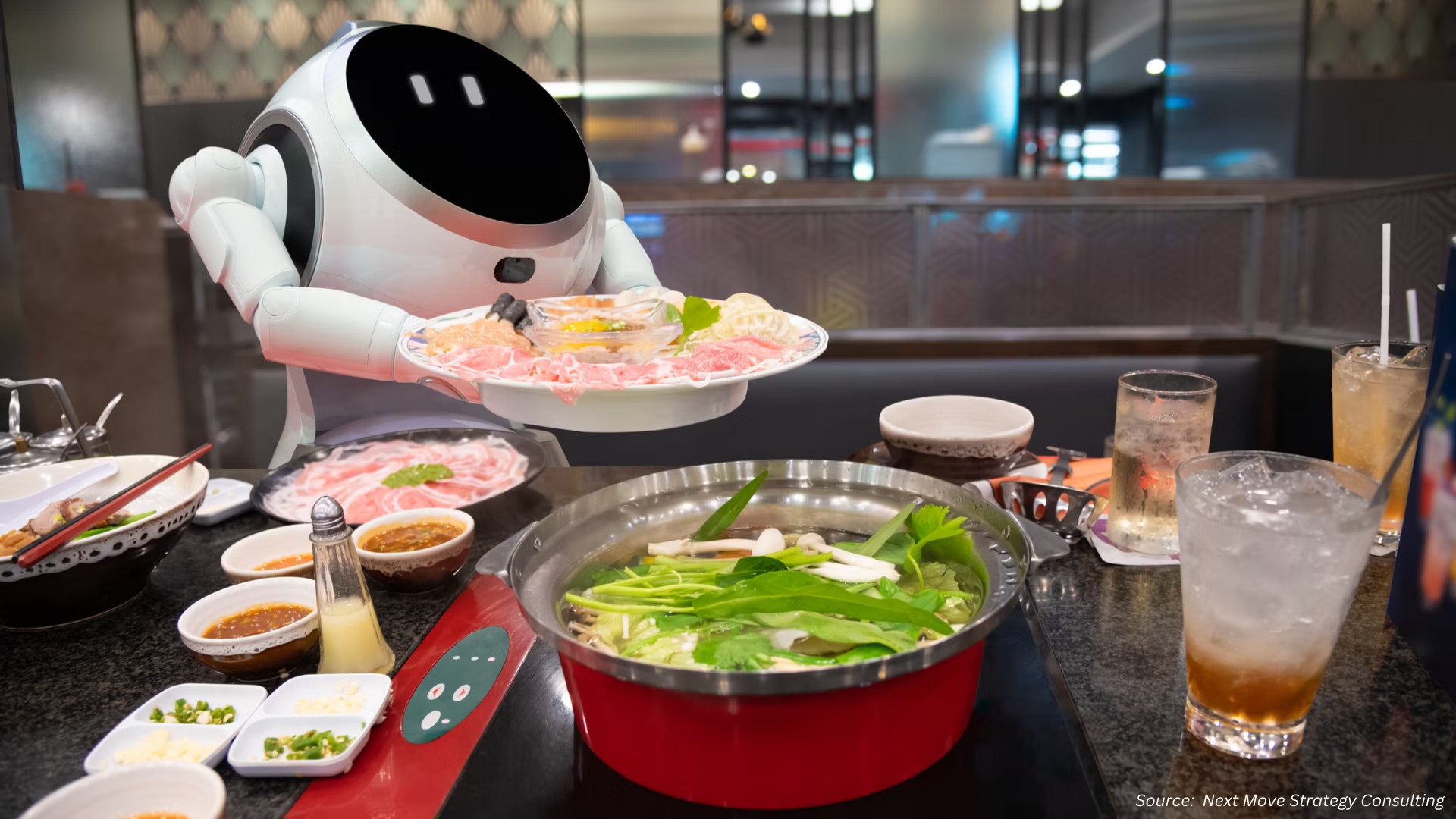What’s Cooking in the Ready Meals Market? Leading Players & Innovations in 2024–2025
Published: 2025-09-10

The Ready Meals Market is sizzling with growth, driven by busy lifestyles, rising incomes, and a hunger for convenience. The sector is projected to reach USD 276.10 billion by 2030, with a compound annual growth rate (CAGR) of 8.9% through 2030.
But who’s leading the charge, and what innovations are transforming this space? Let’s dive into the key players and trends shaping the ready meals market today.
Who Are the Top Players in the Ready Meals Market?
The ready meals market is dominated by global giants leveraging scale, innovation, and distribution to capture consumer demand. Below is an analysis of the leading players:
Nestlé S.A.: A Global Powerhouse
Nestlé, a Swiss multinational, leads with its diverse portfolios, including baby food, confectionery, dairy products, ice cream, coffee and tea, pet foods, frozen food, medical food, bottled water, breakfast cereals, and snacks. Twenty-nine of Nestle’s brands have an annual sale of over CHF $1 billion, some of the more famous ones are Nespresso, Nescafé, Kit Kat, Smarties, Nesquik, Stouffer’s, Vittel, and Maggi. In its 2024 annual report, Nestlé delivered organic sales growth of 2.8%, with RIG of 0.7% and pricing of 2.1%. Growth was broad-based across markets and categories, with improving market share trends across many businesses, particularly our billionaire brands. The company is focused on successfully executing its strategy: driving efficiencies and investing for growth to accelerate our categories and improve market share.
The company is expanding its plant-based offerings, such as Sweet Earth, to meet growing demand for sustainable options.
Conagra Brands, Inc.: North American Leader
Conagra, a U.S.-based firm, excels in frozen meals with brands like Healthy Choice and Marie Callender’s. Its 2025 report highlighted a 1.2% increase in net sales for its Grocery & Snacks segment, fueled by ready meals. Operating profit for the segment increased 19.6% to $210 million in the quarter. In addition, the company wrapped a $7 million net benefit from insurance proceeds in the prior year.
Conagra’s focus on single-serve and family-sized meals caters to diverse consumer needs. Its launch of over 50 new products aims to cater to a wide range of consumer preferences, offering everything from single-serve meals and family-size dishes to gluten-free and plant-based options. Among the highlights are:
-
New offerings under the Dolly Parton brand, which include Southern-inspired meals priced at $4.49 each, such as Beef Pot Roast and Shrimp & Grits.
-
Banquet introduces a collaboration with Mike's Hot Honey, with its new Mike's Hot Honey Chicken Mac 'N Cheese, retailing at $3.49.
-
The expansion also sees the inclusion of global flavors with Healthy Choice's six new globally-inspired meals priced between $3.49 and $4.99.
-
Family-size offerings from Marie Callender's include Chicken Alfredo, Cheesy Chicken & Rice, and Chicken Parmesan at a retail price of $9.99 each, alongside Bertolli's Italian dishes and P.F. Chang's Home Menu selections.
The Kraft Heinz Company: Innovating Classics
Kraft Heinz, known for brands like Kraft Mac & Cheese and Devour, earned a spot in Fast Company’s World’s 50 Most Innovative Companies of 2024 list when it introduced the Heinz Remix. The Heinz Remix increased the company’s sales by over 3%. Kraft Heinz hints at an “agile at scale” strategy.
The company plans to invest approximately $300 million in pricing and trade in the U.S. to maintain competitive price gaps. It aims for nearly 4% productivity savings this year, exceeding the initial target of around 3%.
Other Notable Players
-
Nomad Foods Limited: Europe’s frozen food leader with brands like Birds Eye. In the fourth quarter of 2024, the company delivered strong operational and financial performance. It further reported revenue grew by 4.3% to €793 million, while organic revenue increased by 3.1%, supported by a 4.7% rise in volume.
-
Tyson Foods, Inc.: Tyson Foods raised its annual sales and income forecasts following strong first-quarter results, driven by robust demand for beef and chicken. The company now expects fiscal 2025 sales to be flat to up 1%, versus its previous outlook of flat to down 1%. Annual income guidance was increased to $1.9–$2.3 billion, up from $1.8–$2.2 billion, supported by lower feed costs and operational efficiencies. Net sales rose 2.28% to $13.62 billion, surpassing estimates, while adjusted earnings reached $1.14 per share, beating the expected $0.88.
Nestlé, Conagra, and Kraft Heinz lead globally, while Nomad Foods and Tyson Foods dominate regional markets. Their success stems from strong brand portfolios and investments in premium and sustainable products.
What Innovations Are Driving the Ready Meals Market?
Innovations in technology, packaging, and product offerings are reshaping the ready meals market. Below, we explore the top trends:
Are Plant-Based Meals the Future?
Up to 70% of global consumers reducing meat consumption, plant-based ready meals are booming. Impossible Foods and Beyond Meat, two brands that have expanded into the frozen ready-meal sector, bringing plant-based innovation to convenience foods, stand as examples. They offer a variety of plant-based bowls, pasta, and globally inspired dishes created to deliver the taste and texture of traditional meat while being entirely plant-based.
How Is Technology Enhancing Preservation?
Advanced preservation methods are extending shelf life while maintaining quality. High pressure processing allows gentle preservation of food by high pressure without additives or heat. Since high pressure eliminates many food-damaging organisms and can deactivate microorganisms, decay processes are significantly slowed down, and in some cases even prevented.
For example, some types of fruit no longer turn brown. Flavors and vitamins, on the other hand, consist of very small molecules and do not belong to the group of weak bonds. They are not damaged and remain intact. High pressure processing has proved particularly effective for fruit products and meat products. Although even very sensitive foods in their final packaging are exposed to this pressure, their appearance and consistency remain unchanged after treatment.
When it comes to food preservation there isn’t anything safer than HPP. The result: much longer shelf life and maximum product safety and therefore more satisfied customers.
Is Smart Packaging Changing the Game?
Smart packaging, including nanotechnology-based freshness monitors, is gaining traction. Nanotechnology, the study of materials at a nano-meter scale, provides great scope to develop versatile material capable of monitoring and maintaining the quality and freshness of the food to detect microbial growth and to increase the shelf-life.
Nanotechnology-based smart packaging for foods employs materials, which monitor and provide information about a wide range of changes occurring in the food products like temperature, pH, moisture, microbial growth, and their surrounding environment when developed into intelligent systems like sensors, indicators, and Radiofrequency Identification (RFID) systems.
These assist and increase the ease of product selection by consumers. Nanomaterials, including nano-clays, synthetic, and natural polymer-based nano-composite films or coatings, and metallic nanoparticles, seem promising to develop such stimuli responsive smart packaging, proving the effective role of nanotechnology.
What Role Does E-Commerce Play?
Online retail is growing, driven by dark-store logistics and last-mile delivery. As consumer expectations for fast delivery grew, dark stores evolved to be part of a broader "micro-fulfillment" strategy, often integrating with advanced last-mile delivery solutions. Companies started using AI, robotics, and data analytics to optimize inventory and route planning, leading to faster and more cost-efficient delivery operations.
Plant-based meals, advanced preservation, smart packaging, and e-commerce are key innovations. These trends enhance convenience, sustainability, and quality, meeting evolving consumer demands.
What Challenges Do Players Face?
Despite growth, the ready meals market faces hurdles. Ready-to-eat meals raise several concerns:
-
Nutritional Concerns: Nutritionally, many are high in sodium, unhealthy fats, and preservatives, lacking essential nutrients. They also often contain hidden additives like artificial flavors and trans fats, which may harm health over time.
-
Environmental Impact: Environmentally, their packaging contributes to plastic waste, and their production and transport have a high resource and energy footprint.
-
Safety and Quality Challenges: Dry ready meals, such as instant noodles, dehydrated soups and rice mixes, present specific challenges in ensuring safety and quality throughout their production process. One of the primary issues is the generation of dust and fine particles during production. These particles can obscure contaminants, making detection difficult as they interfere with inspection systems.
-
Health Perceptions: Consumption of ready-meals has been associated with higher body weight. This is likely because ready-meals tend to contain high levels of fat and saturated fat.
-
Cost Savings: Home-cooked meals and takeaways challenge market share. In the long run, cooking at home can be more cost-effective. Basic ingredients typically cost less than a single restaurant meal, and homemade dishes often yield multiple servings, providing extra meals or leftovers for later use.
Next Steps: How to Stay Ahead in the Ready Meals Market
To capitalize on the ready meals market’s growth, stakeholders can take these actionable steps:
-
Invest in Plant-Based Innovation: Develop vegan and flexitarian meals to align with the consumers, reducing meat consumption.
-
Adopt Advanced Preservation: Use HPP to enhance quality and shelf life, appealing to premium segments.
-
Embrace Smart Packaging: Implement biodegradable and intelligent packaging to meet sustainability and freshness demands.
-
Expand E-Commerce Channels: Partner with delivery platforms like Instacart to boost online sales.
The ready meals market is poised for robust growth, driven by convenience, innovation, and changing consumer preferences. By staying ahead of trends and addressing challenges, players can carve out a larger slice of this USD 276.10 billion pie in 2025-2030.
About the Author
 Sneha Chakraborty is a seasoned SEO Executive and Content Writer with over 4 years of experience in the digital marketing space, bringing a strong command of online visibility strategies and a keen insight into the evolving digital landscape. She specializes in enhancing online visibility and user engagement through data-driven strategies and creative content solutions. Sneha is passionate about translating complex digital concepts into accessible content for a wide audience. Outside of work, she enjoys reading, sketching, and exploring the outdoors through nature photography.
Sneha Chakraborty is a seasoned SEO Executive and Content Writer with over 4 years of experience in the digital marketing space, bringing a strong command of online visibility strategies and a keen insight into the evolving digital landscape. She specializes in enhancing online visibility and user engagement through data-driven strategies and creative content solutions. Sneha is passionate about translating complex digital concepts into accessible content for a wide audience. Outside of work, she enjoys reading, sketching, and exploring the outdoors through nature photography.
About the Reviewer
 Debashree Dey is a skilled Content Writer, PR Specialist, and Assistant Manager with strong expertise in Digital Marketing. She specializes in crafting visibility strategies and delivering impactful, data-driven campaigns. Passionate about creating engaging, audience-focused content, she helps brands strengthen their online presence. Beyond work, she draws inspiration from creative projects and design pursuits.
Debashree Dey is a skilled Content Writer, PR Specialist, and Assistant Manager with strong expertise in Digital Marketing. She specializes in crafting visibility strategies and delivering impactful, data-driven campaigns. Passionate about creating engaging, audience-focused content, she helps brands strengthen their online presence. Beyond work, she draws inspiration from creative projects and design pursuits.

















Add Comment